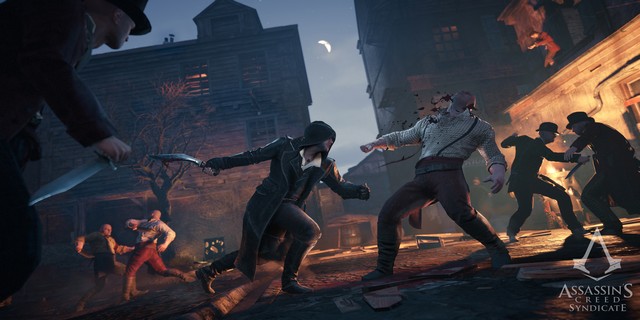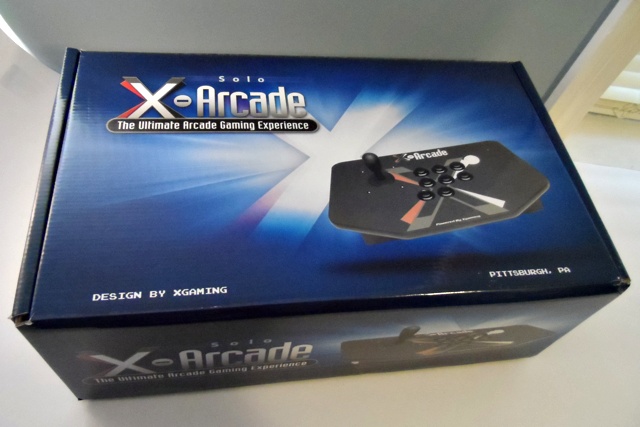

The survival horror genre has been to a lot of interesting places of late – particularly in the indie scene with games like Slender and Five Nights at Freddy’s – but the trailers for Resident Evil creator Shinji Mikami’s new title The Evil Within promised nostalgic long-time gamers a return to the feel of classic Resident Evil and Silent Hill entries.
The Evil Within certainly is reminiscent of Silent Hill and Resident Evil (Resident Evil 4, to be exact). It’s also reminiscent of Alan Wake, Outlast, Dead Space and several other horror titles from the past decade. It feels like a game that’s more concerned with trying to polish the old than it is with trying to introduce something new, but no amount of shine can disguise the age of the furniture.
The Evil Within‘s story stumbles at the first hurdle by handcuffing the player to a dull and painfully generic protagonist. Detective Sebastian Castellanos is a gruff-voiced, craggy-faced, thirty-something brunette white dude with stubble and a tragic backstory. There’s not much else to say about him. Sebastian’s contributions to the game’s atmosphere largely consist of exclamations like “S**t!” and “What the f**k?” As riveting as it is to hear a bored voice actor recite curse words, his dialogue will soon make you wish that Sebastian could be a silent protagonist.
Sebastian plays a crucial role in sapping the scariness out of The Evil Within, for the simple reason that he doesn’t ever seem to get scared. While being chased through the decrepit halls of an insane asylum by a horrific, shrieking, teleporting spider boss monster that leaves bloody handprints in its wake after bursting out of walls and floors, Sebastian grumbles exasperatedly, “What is it with you?” – as though the bloodthirsty spider monster is a nagging girlfriend who has just told him off for putting his beer down without a coaster.
The combat will be familiar for anyone who has dabbled in the Resident Evil franchise. When it comes to the lower-ranked goons (a collection of forgettable zombies with bits of metal shoved in their bodies), their heads explode in a familiar and satisfying way, and old tactics like running around to gather together a zombie fan club before whirling around and knocking them all down with a single shotgun blast will work wonders. Another Resident Evil rule that has carried over: smash everything. Those centuries-old urns have a pretty high chance of containing ammo, syringes or the jars of green goo that Sebastian uses to upgrade his skills.
Instead of making ammo hard to find, The Evil Within enforces brutal inventory restrictions which mean that in the early stages of the game it won’t be possible to carry more than 10 rounds for any weapon. The weapons themselves are cumbersome, with slow reload and fire rates. This is a great way to ratchet up the tension, but a less favorable feature of the combat is the combination of forced battles in very tight corners with a camera that is not at all happy about being boxed in.
Preservation of ammo is all the more important due to the fact that melee is effectively useless. Despite the fact that Sebastian carries a knife that he can use for stealth kills, it’s not possible to use this knife as a weapon in combat (he instead flails ineffectually with his feet and fists) and the other melee weapons found scattered around are single-use only. Downed enemies can be burned to death with a match, but Sebastian cannot hold more than five matches at any one time without upgrading his match-carrying skill. No, really.
In fact, most of the difficulty in The Evil Within is less due to the toughness of the enemies and more due to Sebastian’s handicaps. His “sneaking” mode is painfully slow and it’s not possible to aim or reload a weapon while crouched. Not only that, but Sebastian cannot sprint for more than a few seconds (the limit at the beginning of the game is three seconds) without bending over, wheezing and clutching at his chest – an animation that in itself takes several seconds and which Sebastian diligently completes regardless of whether he’s alone in a room or about to be mutilated by a 10 foot tall mutant. How on earth did this man pass the physical tests required to be in the police force?
Knife combat not actually possible in game
The Evil Within is an extremely boss-heavy game. From giant mutated wolf creatures to the aforementioned spider monster, the boss fights and mini-boss fights are frequent and occasionally back-to-back. The bosses take a lot of punishment and feel a lot more like bullet sponges than the other enemies in the game, but they make up for it by having interesting and varied designs. Unfortunately the game is so pleased with these designs that the player is forced to fight certain bosses over and over again, and in some cases the boss fights don’t actually involve fighting the boss – just running away from it while trying to solve a locked door puzzle.
When it comes to enemy types, it’s a safe bet that just about every player will find their least favorite one in The Evil Within. The game has invisible enemies, invincible enemies, respawning enemies and several enemies that can use insta-kill moves if they get close enough. The most frustrating of these comes during a chapter in the game where ghostly antagonist Ruvik will pop up in the middle of the achingly slow door opening animation and kill Sebastian before the player can even attempt to run away.
It isn’t long before the true terror of the game is revealed to be mundane repetition. The Evil Within was designed to be played on console, not PC, and this is extremely evident in the save system. Manual saves are possible only by visiting an other-worldly psychiatric ward and talking to the enigmatic Nurse Tatiana, and the autosave points are just far enough apart that the player will frequently be sent back to complete the last 5-10 minutes of gameplay all over again.
The plot of The Evil Within is largely concealed for the first half of the game (that amounts to about seven or eight hours of having no idea what’s going on or why), and when it does finally emerge it’s pretty standard stuff. The game seems to be ticking off a survival horror tropes checklist that includes items like chainsaw-wielding maniacs, bad childhoods, mad scientists, twisted experiments, psychic connections, impossible space and heavy hints that everything the player sees is only going on inside Sebastian’s head.
Similarly the environments go on a tour through all of the old favorites: tombs, underground caverns, churches, mansions, insane asylums, abattoirs etc. The Evil Within could be characterized as a Museum of Survival Horror, guiding the player through a series of reveries about the past without taking any steps into the future. The fact that it treads well-worn paths doesn’t make it a bad game; some of the imagery cooked up by Tango Gameworks is genuinely impressive and in lieu of atmospheric terror it does occasionally achieve nerve-jangling levels of tension during boss fights and action scenes. It’s also worth emphasizing that this is a very good-looking game, if a little too obsessed with being “cinematic.”
Had The Evil Within been released ten years ago it might have blown people away, but in 2014 it simply feels derivative. It’s not particularly scary, the gameplay is frequently frustrating and the story isn’t compelling enough to incentivize pushing forward to find out more. Hardcore survival horror enthusiasts should definitely check it out for the monster designs and the RE4-esque puzzles and combat, but everyone else can feel free to give it a miss.
The Evil Within is out now for PC, PS3, PS4, Xbox 360, and Xbox One. This review is based on the PC version.




 Mario Kart 8 - How to Get a Perfect Rocket Boost Start
Mario Kart 8 - How to Get a Perfect Rocket Boost Start Gamescom 2014 Top 10 Games
Gamescom 2014 Top 10 Games Xgaming X-Arcade Solo Joystick Review & Giveaway
Xgaming X-Arcade Solo Joystick Review & Giveaway Dark Souls 2 hints and tips for survival
Dark Souls 2 hints and tips for survival Rogue Legacy PS4/PS3/Vita Beginners Guide
Rogue Legacy PS4/PS3/Vita Beginners Guide